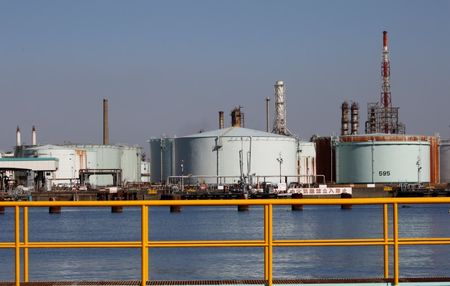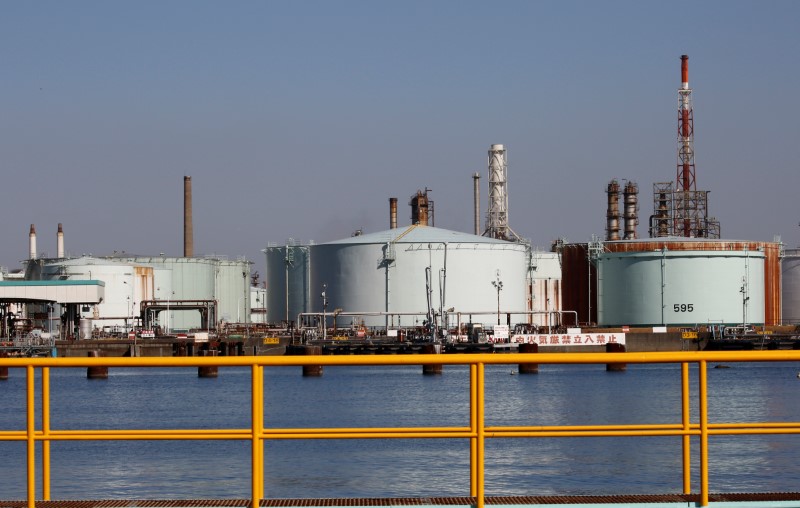Commodities
Energy & precious metals – weekly review and outlook


© Reuters.
Investing.com — There are four more weeks to this year’s Labor Day – the timeline typically used to ascertain the peak for summer oil demand; typically, because oil demand itself is so dynamic that it can go any way any time of the year.
In seven weeks, the Federal Reserve will make another decision on . After benign U.S. jobs growth in July, economists expect the central bank to pause again on its monetary tightening.
But while the pace of U.S. jobs growth is retreating and wage pressures might cool next, energy-fueled inflation could be a new worry for the Fed with crude prices already at three-month highs and threatening to climb further. And so, yes, the Fed could surprise with its .
The North Atlantic hurricane season officially began in June. But tropical cyclone activity – which can cause damage to oil industry installations in the U.S. Gulf Coast of Mexico -— sometimes occurs as late as end-November. The peak of the Atlantic hurricane season is usually before mid-September, with most activity occurring between mid-August and mid-October.
And by Oct. 4, it’ll be time for the Saudis to decide if they’re going to pull another million barrels per day off their November production. With their mania over cuts to push up barrel prices, the kingdom is expected to continue choking the crude market.
Amid all these is China’s oil demand, which still raises a big question mark.
Bloomberg reported earlier this week that China’s appetite for fuels and other oil-derived products such as plastics may have peaked for this year as economic woes in the No.1 oil importer continue to stand in the way of a full rebound from Covid Zero.
While recent headline numbers for Chinese crude imports pointed to robust oil demand, much of that supply has been stockpiled rather than turned into gasoline and diesel, according to analysts. The nation’s economic recovery continues to show signs of strain this year through weak indicators across manufacturing and infrastructure sectors, weighing on the outlook for commodities.
Also, fewer Chinese tourists traveling overseas this year is said to be the main reason why jet fuel shipments have yet to return to peak.
“If you take the different supply-demand timelines for crude in the near term to reach a consensus, you get underwhelming consumption for fuels,” said John Kilduff, partner at New York energy hedge fund Again Capital. “It’s not surprising that the Saudis want to create a highly-choked supply situation instead to mask this and keep the upward pressure on oil prices.”
have fallen by a net 2.322M barrels over the past six weeks while , the raw component for and diesel, have gained by 2.867M in the same period.
The American Automobile Association, or AAA, says gasoline price increases might actually be benign this summer despite initial worries they could reach toward the June 2022 record high of $5 a gallon.
The national average for a gallon of gas has continued its summer U-turn, the AAA said in a blog post Monday, while noting that price increases have slowed and more relief could be on the way.
Oil: Market Settlements and Activity
Like an encore demanded each time OPEC gathers, the Saudi production cuts gambit rose to the occasion again this week, with the kingdom announcing ahead of its monthly meeting on Friday that it will drop another million barrels per day from its September output.
U.S. West Texas Intermediate, or , crude did a final trade of $82.64 – up $1.09, or 1.34%, after the Saudi announcement.
The session high for WTI was $83.23, a peak not seen since early April. For the week, the U.S. crude benchmark rose 2.8%, adding to July’s gain of nearly 16%.
London-based crude closed the session at $86.15 – up $1.01, or 1.19%.
The intraday peak for Brent was $86.64 – the highest since mid-April. For the week, the global oil benchmark gained almost 2%, after running up nearly 14% for July.
Oil: WTI Price Outlook
While the momentum in WTI suggested it could ride till $86 before serious resistance emerged, the rally could reach exhaustion earlier, technical chartist Sunil Kumar Dixit said.
“WTI has the appearance of an overbought market although its 4-Hour Stochastics still have room for upside, with open targets for the 100-day SMA, or Simple Moving Average, of $85.45 and the monthly Middle Bollinger Band of $86.90,” said Dixit, who’s chief technical strategist at SKCharting.com.
While a previous correction towards $78.70 had rebooted WTI’s rally, “a settlement below the 5-day EMA, or Exponential Moving Average, of $81.45 will be an initial sign of exhaustion,” Dixit added.
Gold: Market Settlements and Activity
Most-active on New York’s Comex showed a final trade of $1,978.20 an ounce on Friday, after officially settling the session at $1,976.10 – up $7.30, or 0.4%, on the day and 0.9% for the week.
The , which reflects physical trades in bullion and is more closely followed than futures by some traders, settled at $1,942.90.
Gold: Price Outlook
As spot gold extended its decline for a third week running, it could be seen completing a so-called Wave 5, which, if confirmed by consistently higher highs, would resume the yellow metal’s uptrend, said Dixit of SKCharting.com.
“Initially, spot gold trading above the 50-Day EMA, or Exponential Moving Average, of $1,949 and the Daily Middle Bollinger Band of $1,954 needs to be cleared, followed by buying momentum above the 4-Hour 100 SMA, or Simple Moving Average, of $1,958,” Dixit said.
“If gold manages to show strength above these critical levels, the next challenge will come at the 100-day SMA of $1,969. This is where the bulls and bears will have a tough time to decide who is in control.”
A rejection from this point, or the earlier $1,954-$1,958 range, will indicate victory for the bears, he added.
Natural gas: Market Settlements and Activity
The gas contract on the New York Mercantile Exchange’s Henry Hub did a final trade of $2.579, after officially settling Friday’s session at $2.577, up 1.2 cents, or 0.5%, on the day.
For the week, September gas was down 2.3%.
Natural gas: Price Outlook
Natural gas futures remain neutral, trading sideways with temporary bearish consolidation below the 200-day SMA of $2.65 on 4 Hour time frame, noted Dixit of SKCharting.
“As long as the 100-day SMA which aligns with Weekly middle Bollinger Band $2.40 remains intact with Daily/Weekly closing basis, resumption of upward rebound will remain valid which initially targets retesting swing high $2.84 followed closely by psychological handle $3.00,” he said.
Decisive breakout below $2.40 will turn momentum bearish with potential drop to $2.10 followed by $2, Dixit added.
Disclaimer: Barani Krishnan does not hold positions in the commodities and securities he writes about.
Commodities
Oil prices rise; U.S. crude inventories plunge, Russia-Ukraine truce eyed
Commodities
India’s Reliance to stop buying Venezuelan oil over US tariffs, sources say
Commodities
Oil prices climb on Venezuela supply worries

 Forex3 years ago
Forex3 years agoForex Today: the dollar is gaining strength amid gloomy sentiment at the start of the Fed’s week

 Forex3 years ago
Forex3 years agoUnbiased review of Pocket Option broker

 Forex3 years ago
Forex3 years agoDollar to pound sterling exchange rate today: Pound plummeted to its lowest since 1985

 Forex3 years ago
Forex3 years agoHow is the Australian dollar doing today?

 Cryptocurrency3 years ago
Cryptocurrency3 years agoWhat happened in the crypto market – current events today

 World3 years ago
World3 years agoWhy are modern video games an art form?

 Commodities3 years ago
Commodities3 years agoCopper continues to fall in price on expectations of lower demand in China

 Economy3 years ago
Economy3 years agoCrude oil tankers double in price due to EU anti-Russian sanctions

























